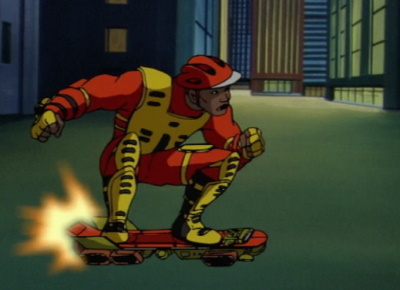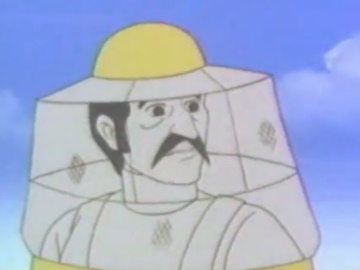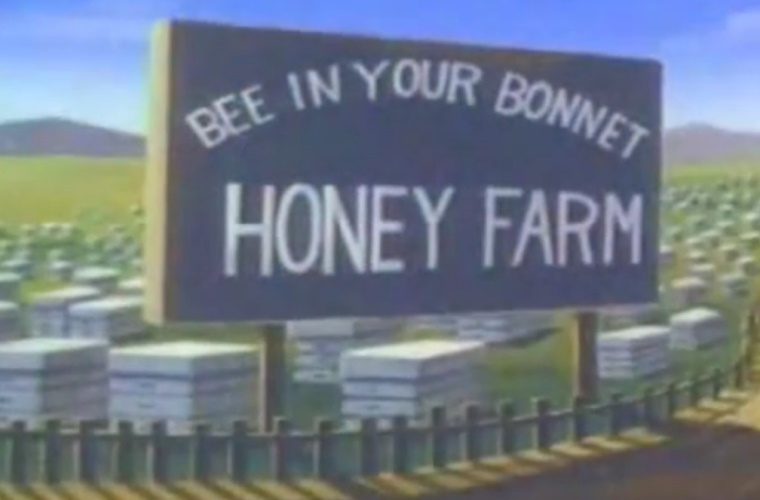I’m gonna do it again! I’m gonna watch a science fiction show I dimly remember from my youth again! Only actually, this time it isn’t as dimly remembered and I was slightly less of a youth.
I was over twenty when I watched Firefly, still a child by the standards I hold now, but technically an adult. And by the time I was twenty, I was more discerning about the television I watched, which is why I absolutely never watched Firefly while it was on television. But I heard good things and I got around to it when it was on DVD. I remember liking it! But I also remember thinking it’s one of those things where if it hadn’t been cancelled early, the Internet maybe wouldn’t have been as in love with it as it was. I can’t know if that’s true, but it was the opinion I held. Now, decades later, I don’t even know if the show is held in the esteem it once was. I think people still like it fine, but I’m out of touch, so what do I know? But here’s the thing: I wanted to do another PDR Sci-Fi Watching but also I don’t want to commit to a big project while I’m falling behind on other projects, so a show that got cancelled after a dozen episodes or whatever sounds like it’ll go down smooth.
So what do I remember about the show? Well, unlike Earth-2 or Space: Above and Beyond, which had fled my teenage mind after their cancellations, I can even now remember whole characters, names and all. If I tried, I could probably come up with a general description of five or six episodes even. I even know that the show doesn’t have any aliens for poor little alien-starved me. So this one will not be a font of surprises, but it should be easy, and that’s probably more important.
I’m gonna do it again! I’m gonna watch a science fiction show I dimly remember from my youth again!
Last time, I did Earth 2, a show I remembered fondly. This time, I’m doing a show I definitely watched, but I don’t remember as well. Space: Above and Beyond. It aired around the same era as Earth 2, and the basic premise was that aliens were coming and space fighter pilots had to fight them off. I feel like it was a more militaristic sci-fi than is usually my scene, but it was still science fiction on television while I was a teenager, so I had to watch it.
Oddly, the one solid thing I remember is that the aliens were somewhat insectoid, so when the humans came up with the derogatory term for them, they went with “Chiggers”. Yes, that’s right, much like how Earth 2 had humans use “Diggers” to refer to some of that show’s aliens, this one also chooses to dance around the N-Word to make a point. Anyway, I’m hoping that the aliens on Space: Above and Beyond at least look cool. Anyway, let’s fine out.
Hey, remember Earth 2? It was a sci-fi show that aired… (PDR goes to check Wikipedia)… in 1994 and 1995. I don’t remember a lot about it, but I do know that thirteen-year-old PDR liked it.
My memories are that it’s about a ship full of colonists who go to another world to start a new society. While there, they have a bunch of troubles, not least of which is some kind of native life form that I think was trying to contact them in their dreams. I feel like there may have been a months-long break in the airing of the show. I have no idea what parts of what I just said are correct, but that’s how it is in my memory.
I refuse to read past the date on that Wikipedia page, because PDR is going to rewatch Earth 2 and write about it here on this website that he likes to write it on. I expect to do more than one post a week until I get through, so for the next month or two I’m going to be steeped in Earth 2-ness.
There was an episode of the ’90s Spider-Man cartoon that had Robert Farrell in it. They never actually call him “the Rocket Racer” in the episode, but he does all the usual Rocket Racer stuff. It’s got to be the most prominent appearance of the character outside of the comics so far, and it’s likely to remain that way for a long time.

In the fifth episode of the third season, titled “Rocket Racer” we meet Robert Farrell, voiced by Billy ‘Pop’ Atmore.
Watching the episode, I find that we get a lot of the things I want to see in a Rocket Racer story. There’s subtle commentary on race and how ex-criminals aren’t given a fair shot at finding their way back into society. We’re shown Bob struggling to help out his sick mother, whose illness is never identified. We’re shown that the neighbourhood where Bob lives is on his side (a pharmacist gives him a discount on medicine). Bob shows no signs of romantic interest in anyone. We even get the Big Wheel making an appearance. All in all, this is about as faithful an appearance to the comics version as possible. So here’s where I pick out what is different about Rocket Racer here and his usual portrayal in the Marvel Universe.
- Bob is young here. I’ve mentioned this one before, but usually Bob is depicted as being at least as old as Spider-Man, but in this episode he is a teenager who is actually a student being tutored by Peter Parker. I don’t mind that he’s aged down for this (as I’ve said, you’d expect a skateboard-themed character to be young), but I don’t like that he knows Peter Parker. That makes the world feel very small.
- Bob’s story is backwards. In the comics, Bob was an upstanding and smart young child who had to resort to crime because he couldn’t afford to take care of his family when his mother got sick. In the cartoon, Bob was a criminal child who turned his life around to help his mother when she got sick. There’s a place for each kind of story, sure, but I prefer the original, because it casts the broken aspects of society as the impetus.
- Bob’s family doesn’t exist here. In this cartoon Mrs. Farrell (never named Emma, but we can assume) is shown to be a single mother, but instead of having seven children, she seems to only have Bob. I do feel that Bob’s siblings represent untapped potential for Rocket Racer stories, but this isn’t a Rocket Racer story. This is a Spider-Man show that only goes to the Rocket Racer well one time, so it doesn’t need all those other kids around to complicate things. It is understandable to have excised them. (Also, Mrs. Farrell is depicted as much thinner and more conventionally attractive than her comics counterpart. That I don’t like. Let’s have more representation of large people, please. But I guess having six fewer children made a difference.)
- Mrs. Farrell owns a grocery store. We’re never told what Mrs. Farrell did for work in the comics, but in this cartoon she owns Farrell’s Grocery. Maybe the comics version has this store too. Maybe it’s manned by Bob’s adult siblings we never see. We simply don’t have the information.
- The Big Wheel’s story is also backwards. In the comics, Jackson Weele was an embezzling businessman who was conned by Bob when the Rocket Racer did crimes on corporate types. That caused Jackson to create the Big Wheel persona for revenge. In the cartoon, the Big Wheel is an existing criminal mastermind with a gang of henchmen in power-suits called the Rocket Raiders. I’d guess maybe this was changed to make Bob a more sympathetic character, since blackmailing someone so hard that they become a supervillain isn’t a great look if you want the kid to be a poor wretch who deserves better, right?
- Bob steals equipment from the Rocket Raiders to create his own Rocket Racer equipment. In the comics, Bob gets his equipment from junkyards and the Tinkerer. This is a very minor change, given that we’re still shown Bob assembling the equipment himself and Peter admits that Bob knows a lot about gyroscopic science or whatever it is. Sure, it seems like it’d be less impressive to build a rocket skateboard from pre-made equipment than from scratch, but it’s only really done to drive the conflict here. I’ll allow it.
So that’s my report on the Spider-Man Animated Series episode Rocket Racer. Let’s see what the people on the Internet have to say about it. “This episode and The Spot are considered by most fans to be the two worst episodes of Spider-Man: The Animated Series.” Ah. Well. At least it’s a tie, and not dead last.

The Scooby-Doo franchise has already provided me with a couple of Beekeepers to review. The Bee-Man of Alcatraz and Mr. Wilkins and Brittany have all been Beekeepers who have met the Gang either as friend or foe. But none of those were the first! Unless I’ve missed something quite obscure, the chronologically-earliest Beekeeper to meet Scooby-Doo and friends is one Nathan Stinger.
In a lot of ways, Nathan Stinger is very impressive. His name is “Stinger” for goodness sake! And he lives in a town called Honeydale! This is all excellent Beekeeper Branding. Plus, I’ve mentioned before that I like when Beekeepers are also scientists, well, to spoil the ending to his episode, he secretly works for NASA helping create and protect a supply of rocket fuel which is coveted by spies from other nations.

Stinger’s bees are similarly notable. We’re told that there are 95 million bees in Honeydale and presumably most of them are Stinger’s. Indeed, he has a very large operation. And the bees are smart too! They have that cartoon bee power where a cloud of them can come together and form into a shape like a hand or a fly swatter or something. It’s all quite good. The bees even help out in the fight against the baddies in the end.
But that’s the thing. The baddies. No matter how impressive Stinger and his bees are, we’re still meeting them in a typical Apiarist In Distress situation. The episode is about spies (posing as renegade giant killer bees, of course) attacking Stinger’s farm to steal that sweet, sweet rocket fuel. This greatly hurts Stinger’s business and they even kidnap him at one point. The show belongs to Scooby and the Gang, so they have to be the heroes. That’s just the facts. Under some other circumstances, maybe Stinger could rate higher, but as depicted in this episode he’s just a little above average.

Three Honeycombs out of Five. In Scooby-Doo monsters are more likely to return than supporting cast members, but let’s make an exception for Nathan Stinger, why not?





